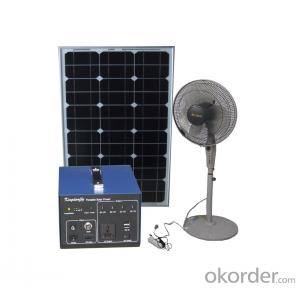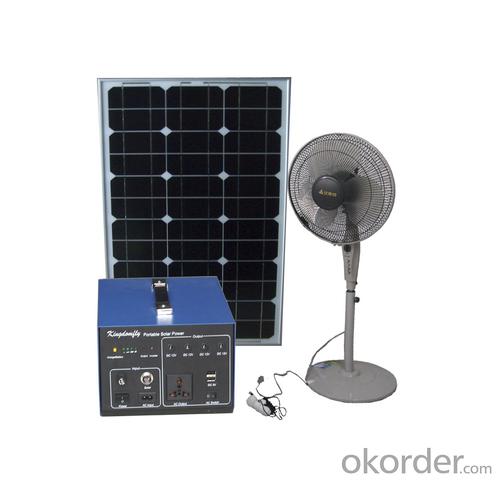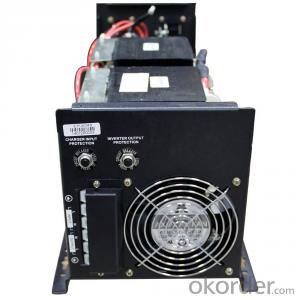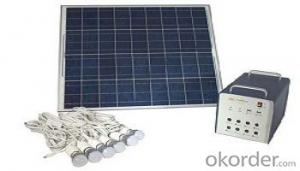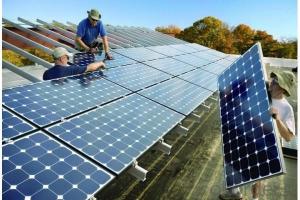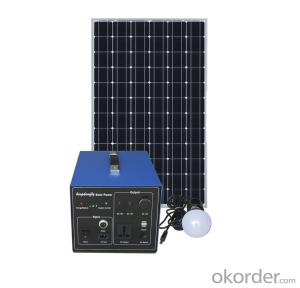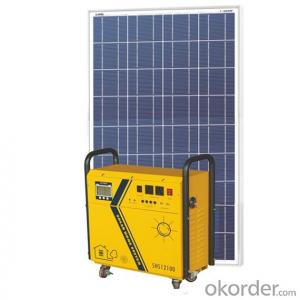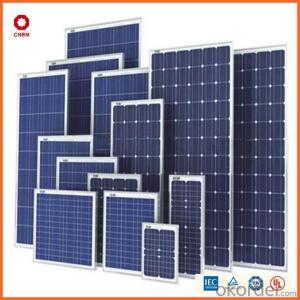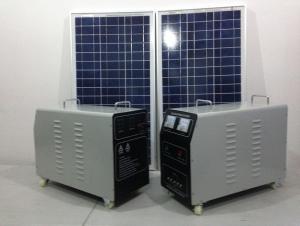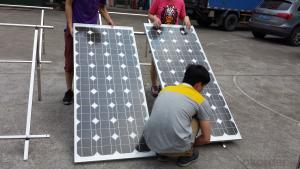2 Types of Solar Energy Systems - Portable Solar Lighting System Hot Selling SPS_50W
- Loading Port:
- China main port
- Payment Terms:
- TT OR LC
- Min Order Qty:
- 3 pc
- Supply Capability:
- 10000 pc/month
OKorder Service Pledge
OKorder Financial Service
You Might Also Like
Main Information
SPS_50W This product is high performance,family used portable solar power system,which can receive energy and store it in battery outside connected to SPK by solar energy on sunny day,and supplies electric power for varies appliances such as electric fan,lighting lamps, television, portable computer etc.It can supply power for both DC and AC electric application .It’s very helpful and useful for home electric supply.
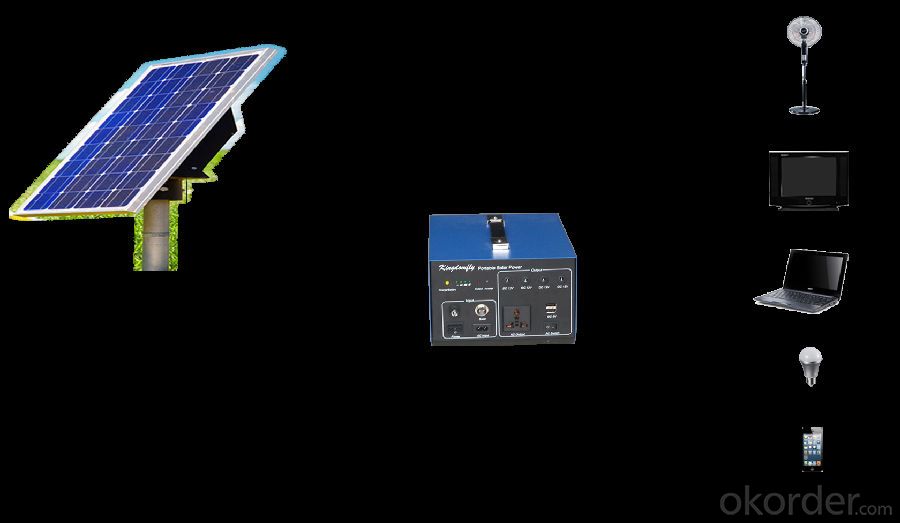
Features
◆ Both Solar charge input and AC charge input.
◆ Both DC and AC output
◆ Solar Feedback Circuit Protection
◆ Output Short-circuit Protection
◆ Solar「+」「-」anti-access protection
◆ Output「+」「-」anti-access protection
◆ Over Charged Protection
◆ Over Discharged Protection
◆ Over Load Protection
◆ Over-Temperature Protection
Technical parameters
Specification | Value/Material | |
Item No. KDF | SPS_50W | |
Solar Recommended | Specification | Poly silicon |
Working Voltage/Power | 18V45~60WP | |
Battery | Rated Voltage/Capacity | 12V26AH |
Cycle Number | 80% Deep Cycle Number:500 70% Cycle Number:800 | |
Working Temperature | Short Period(one Month):-20~50℃ Long Period(Six Months):-10~45℃ | |
Charging Controller | Operating Voltage | 12V |
Input Voltage | 17.3V~21V | |
Input current | MAX:10A | |
Power Consumption | MAX: 5mA | |
Low Voltage Disconnect(LVD) | 10.8V | |
Low Voltage Reconnect(LVR) | 12.3V | |
High Voltage Discharge( HVC) | 14.6V | |
High Voltage Recharge(HVR) | 13.8V | |
Temperature Protection | 60℃ | |
DC Output | DC output & Application | USB 5V1A*2 |
DC output & Application | DC 12V1*4A | |
AC Output | Output Wave | Modified Wave |
Input Voltage | 11V~15V | |
Output Voltage | 110V±10% | |
Output Frequency | 60Hz±2Hz/50Hz±2Hz | |
Rated Output Power | 200W | |
Maximum VA | 400VA | |
Maximum Efficiency | 88% | |
Temperature | 0-40℃ | |
Over Temperature | 60℃~70℃ | |
Low Voltage Alarm | 11V | |
Low Voltage Shut off | 10.5V | |
High Voltage Shut off | 16V | |
Package | Set size | 328*252*267mm |
Set N·W | 11.6kg | |
Set N·W | 12.8kg | |
- Q: Can solar energy systems be used in countries with low sunlight availability?
- Yes, solar energy systems can still be used in countries with low sunlight availability. While it is true that solar energy systems rely on sunlight to generate electricity, advancements in technology have made it possible to capture and utilize even small amounts of sunlight efficiently. Additionally, solar energy systems can be designed to incorporate other renewable energy sources, such as wind or hydroelectric power, to supplement low sunlight availability. Furthermore, using energy storage systems, such as batteries, can help store excess energy during periods of low sunlight and release it when needed. Therefore, even in countries with low sunlight availability, solar energy systems can still be a viable and sustainable option for generating electricity.
- Q: How does a solar energy system work?
- A solar energy system works by capturing sunlight using photovoltaic (PV) panels or solar thermal collectors. The PV panels convert sunlight directly into electricity by using semiconductor materials, while solar thermal collectors use sunlight to heat water or air for various purposes. The electricity generated by the PV panels can be used to power homes or businesses, or it can be stored in batteries for later use. Additionally, excess electricity can be fed back into the grid for credit or sold to utility companies. Overall, solar energy systems harness the power of the sun to provide clean and renewable energy.
- Q: Can solar energy systems be used in areas with high wind conditions?
- Yes, solar energy systems can be used in areas with high wind conditions. While wind turbines are typically used to harness wind energy, solar panels can still be installed and function effectively in such areas. The performance of solar panels may be slightly impacted by the presence of wind, but with proper design and installation, they can still generate significant amounts of clean energy.
- Q: Can solar energy systems be used in developing countries without access to reliable electricity?
- Yes, solar energy systems can be used in developing countries without access to reliable electricity. Solar power is a sustainable and renewable energy source that can be harnessed to provide electricity in areas where grid connectivity is limited or non-existent. By installing solar panels and utilizing energy storage systems, developing countries can generate their own clean and affordable electricity, reducing dependence on fossil fuels and improving the quality of life for their communities. Additionally, solar energy systems are relatively easy to install, require minimal maintenance, and have a long lifespan, making them a viable option for remote and rural areas in developing countries.
- Q: Can solar energy systems be installed on flat surfaces?
- Yes, solar energy systems can be installed on flat surfaces. While it is more common to install solar panels on angled surfaces to maximize sunlight absorption, flat surfaces can still be utilized for solar energy systems. Mounting systems can be used to tilt the panels towards the sun and optimize energy production even on flat surfaces.
- Q: What is the impact of electromagnetic interference on solar energy system performance?
- Electromagnetic interference can have a negative impact on the performance of solar energy systems. It can cause disruptions and fluctuations in the electrical signals and data transmission within the system, leading to reduced efficiency and reliability. Additionally, electromagnetic interference can interfere with the proper functioning of inverters and other critical components, potentially causing system failures and downtime. Therefore, it is crucial to implement proper shielding and mitigation measures to minimize the impact of electromagnetic interference on solar energy system performance.
- Q: What are the disadvantages of using solar energy?
- One disadvantage of using solar energy is that it is dependent on the availability of sunlight. Cloudy days, nighttime, and geographical locations with limited sunlight can limit the efficiency and reliability of solar power. Additionally, the initial cost of installing solar panels and equipment can be quite high, although it is usually offset by long-term savings on energy bills.
- Q: Can solar energy systems be used for powering refrigeration systems?
- Solar energy systems have the capability to power refrigeration systems. Through the use of solar panels, solar energy can be converted into electricity, which can then be utilized to operate refrigeration systems. This is commonly achieved by employing photovoltaic (PV) systems, which convert sunlight into electricity using semiconducting materials. The electricity generated by these systems can be employed to power the compressors and other components of refrigeration systems, enabling them to function independently from traditional power sources. By harnessing solar energy for refrigeration, not only can energy costs be reduced, but also the environmental impact can be minimized, as solar energy is a clean and renewable power source.
- Q: What are the main features of solar photovoltaic systems
- Compared with the commonly used thermal power generation system, the advantages of photovoltaic power generation:No danger of depletion; safe and reliable, no noise, no pollution, absolutely clean (pollution-free); not subject to geographical distribution of the resources, can take advantage of the building roof; for example, areas without electricity, and complex terrain area; no fuel consumption and the erection of transmission line can be on-site power supply high quality energy;; users emotionally receptive; the construction period is short, get energy to spend a short time.
- Q: Can solar energy systems be used for powering hospitals?
- Yes, solar energy systems can indeed be used for powering hospitals. Solar panels can be installed on the rooftops or nearby areas of hospitals to generate clean and renewable electricity. This energy can then be used to power various hospital operations, including lighting, medical equipment, refrigeration, heating, and cooling systems. Solar energy systems can help hospitals reduce their reliance on fossil fuels, lower their energy costs, and contribute to a more sustainable and resilient healthcare infrastructure.
Send your message to us
2 Types of Solar Energy Systems - Portable Solar Lighting System Hot Selling SPS_50W
- Loading Port:
- China main port
- Payment Terms:
- TT OR LC
- Min Order Qty:
- 3 pc
- Supply Capability:
- 10000 pc/month
OKorder Service Pledge
OKorder Financial Service
Similar products
Hot products
Hot Searches
Related keywords
